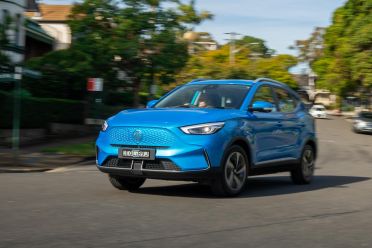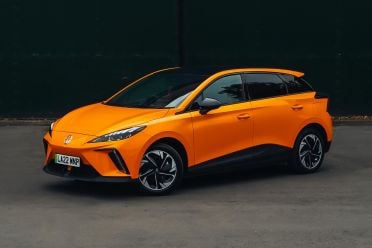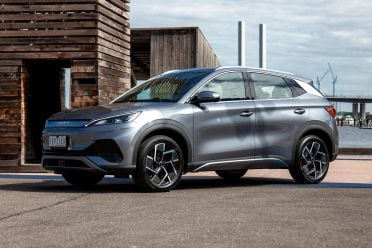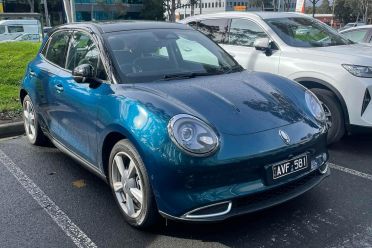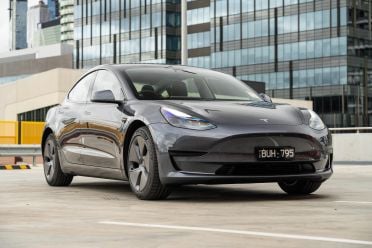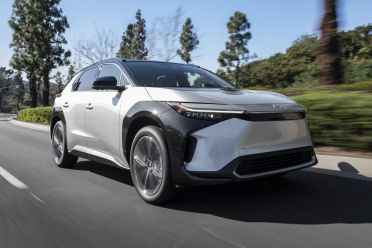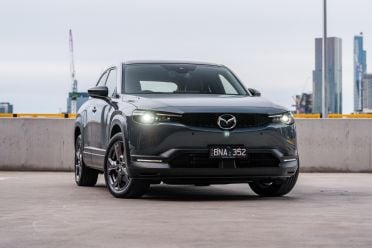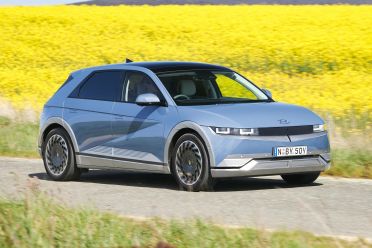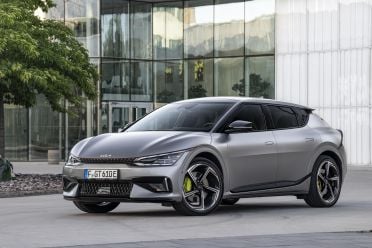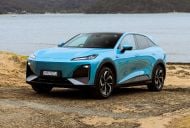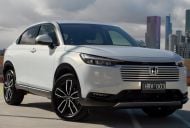OPINION: If you want an affordable electric vehicle in Australia, chances are you’re looking at something from an emerging Chinese brand, or at the very least built there.
That’s a sea change no matter how you spin it, and reflects China’s dominance in global EV sales and across the wider supply chain.
Australia’s EV penetration hit a monthly record of 4.4 per cent in August, which is low by global standards, but does show demand for zero-tailpipe-emission cars is growing.
The fact newish-to-market Chinese nameplates are currently supplying – or soon will be supplying – the local market with an over-indexed proportion of EVs is an indictment on the so-called ‘legacy’ brands that have failed to keep up with the times.
Take MG, owned by SAIC Motor from Shanghai. Its newly updated MG ZS is the cheapest EV in Australia at $44,990 drive-away, around the same money as a mid- to high-spec small petrol SUV from Japanese, Korean and European marques.
That’s the same price as the pre-facelift MG ZS EV model which was the top-selling non-Tesla EV in Australia last year. That’s despite getting a new design, more range, and added tech. The first batch of 2000 units won’t last long.
MG will expand its range in early 2023 when the MG 4 hatch launches, shortly after it hits European shores (boatloads are already heading there). This is a brand-new product that should cost around $40k based on what it costs relative to the ZS EV overseas.
It’s also giving away thousands of wallbox chargers to hotels, which is nothing if not clever marketing.
Then we have BYD, another Chinese ‘new energy’ powerhouse that counts Warren Buffett as a shareholder. Its Atto 3 EV is about as cheap as the MG, and there are thousands of them arriving and hitting customer hands right now, albeit with a few teething problems.
I actually have an Atto 3 press car in my driveway right now.
BYD plans to expand its fleet with a shorter-range, cheaper Atto 3 before the end of this year and will add two models – the Seal sedan and Dolphin small hatch, name changes pending – in 2023.
Its local distributor says there’s a dedicated right-hand drive production line for us, with huge output potential.
From there we move to GWM, short for Great Wall Motor, which sells the GWM ute and its GWM Haval SUVs here already. In 2023 it will launch the GWM Ora brand, which like MG and BYD is also currently breaking into Europe.
The first GWM Ora EV will be a cute little hatchback strangely called the Good Cat, with at least one right-hand drive series production model already in Melbourne for market evaluation ahead of sales commencing.
Three new (ish) Chinese brands, all rolling out contextually cheap EVs at scale – something few legacy brands at the mainstream end of the market have been able to do in Australia so far.
Beyond Chinese brands, there’s also the issue of China’s dominance in EV production. The top-selling Tesla Model 3 and Model Y sold here are both sourced from Shanghai, and the Polestar 2 which is growing in momentum, is made in Zhejiang.
Juxtapose this with Australia’s top legacy brands. Toyota won’t launch its first EV, the problem-plagued bZ4X, until 2023 at a self-confessed high price point. Mazda sells the MX-30 EV, but it costs $70,000 on the road and has a meagre 224km range on the generous ADR cycle.
Mitsubishi has no EV due to its PHEV focus, nor does Ford since its E-Transit van has been delayed to 2023 and the Mustang Mach-E remains a no-show. Volkswagen won’t launch its first EV here until late 2023 at the earliest, though its Cupra brand will sell the Born EV earlier.
Subaru will launch a twin to the Toyota bZ4X next year called Solterra, but based on what we’ve heard from the Big T it’ll be expensive and limited in supply. Mid-level volume brands Suzuki and Honda likewise have no EVs coming in the short- to mid-term future.
Hyundai and Kia are better represented, with the Kona and Niro respectively available at the affordable end, though they’re still pricier than the MG ZS and BYD Atto 3.
The pair’s gorgeous Ioniq 5 and EV6 sit at the upper end – but are held back by super-tight supply that makes them niche sellers despite ravenous customer demand.
Nissan to its credit sells the (ageing) Leaf, but is yet to get its hands on the newer Ariya EV crossover. Nor is there a firm timeline we’ve seen for its local rollout as other regions are higher priorities.
Premium brands such as BMW, Mercedes-Benz and Volvo are doing better, but if we want serious EV penetration it’s the top 10 brands (which account for about 70 per cent of the market) that need to do the heavy lifting. And frankly, they aren’t.
While the familiar car brands have been saying they need binding emissions targets to help them lobby for EV stock from overseas factories, and national EV rebates to level the playing field, relative startups from China have been plotting and delivering products at scale, with affordable price tags.
It doesn’t matter how you spin it, the established set of brands are being made to look slow.
MORE: All the EVs coming to Australia: Launch calendar, what’s here already?
MORE: Australia’s best-selling EVs in the first half of 2022
MORE: What electric car buyer incentives are offered across Australia?
MORE: Dumping ground no more? Australian Government’s affordable EV push

